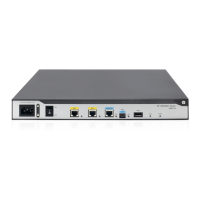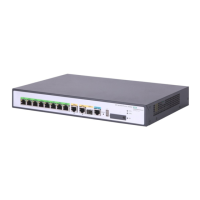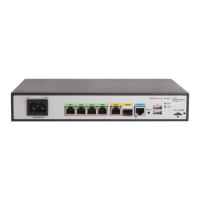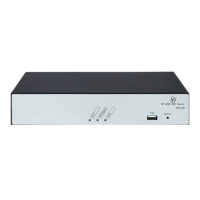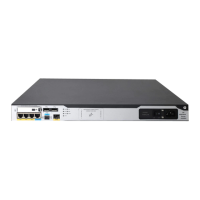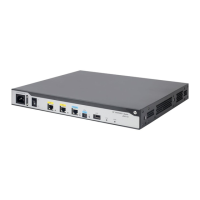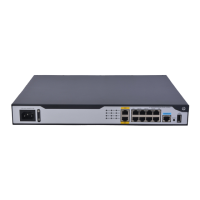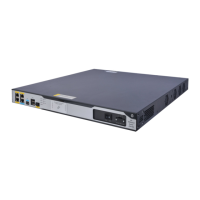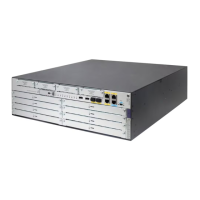13. Set the MTU for the BRI
interface.
mtu size The default is 1500 bytes.
14. Set the keepalive transmission
interval.
timer-hold seconds The default is 10 seconds.
15. Set the intended bandwidth
for the E1-F interface.
bandwidth bandwidth-value
By default, the expected
bandwidth (in kbps) is the interface
baud rate divided by 1000.
16. Restore the default settings for
the E1-F interface.
default N/A
17. Bring up the E1-F interface.
undo shutdown By default, an E1-F interface is up.
Displaying and maintaining E1-F interfaces
Execute display commands in any view and the reset command in user view.
Task Command
Display information about E1-F interfaces. display fe1 [ serial interface-number ]
Display the status of an E1-F interface. display interface serial interface-number
Clear statistics for E1-F interfaces. reset counters interface [ serial [ interface-number ] ]
Configuring a T1-F interface
T1-F interfaces, fractional T1 interfaces, are simplified CT1/PRI interfaces. They are a cost-effective
alternative to CT1/PRI interfaces where T1 access does not require multiple channel sets or ISDN PRI.
A T1-F interface has the following features:
• In framed mode, a T1-F interface can bind timeslots into only one channel set. In contrast, a CT1/PRI
interface can group and bundle timeslots randomly into multiple channel sets.
• A T1-F interface does not support PRI mode.
A T1 line is multiplexed from 24 channels. A T1 primary group frame DS1 (digital signal level-1)
comprises 24 DS0 (64 kbps) timeslots and 1 framing bit for synchronization, with each timeslot being 8
bits. Each primary group frame has 193 bits (24 × 8+1). Because DS1 can transmit 8000 frames per
second, its transmission speed is 1544 kbps (193 × 8 kbps).
A T1-F interface can only operate in framed mode. Timeslots 1 through 24 on it can randomly form a
channel set. For the channel set, a synchronous serial interface is created automatically. The interface
rate is n × 64 kbps or n × 56 kbps, where n is the number of bundled timeslots. The synchronous serial
interface has the same logical features as a standard synchronous serial interface. You can configure this
interface in the same way you configure a standard synchronous serial interface.
30
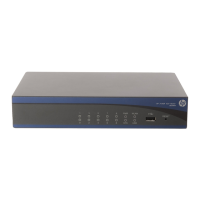
